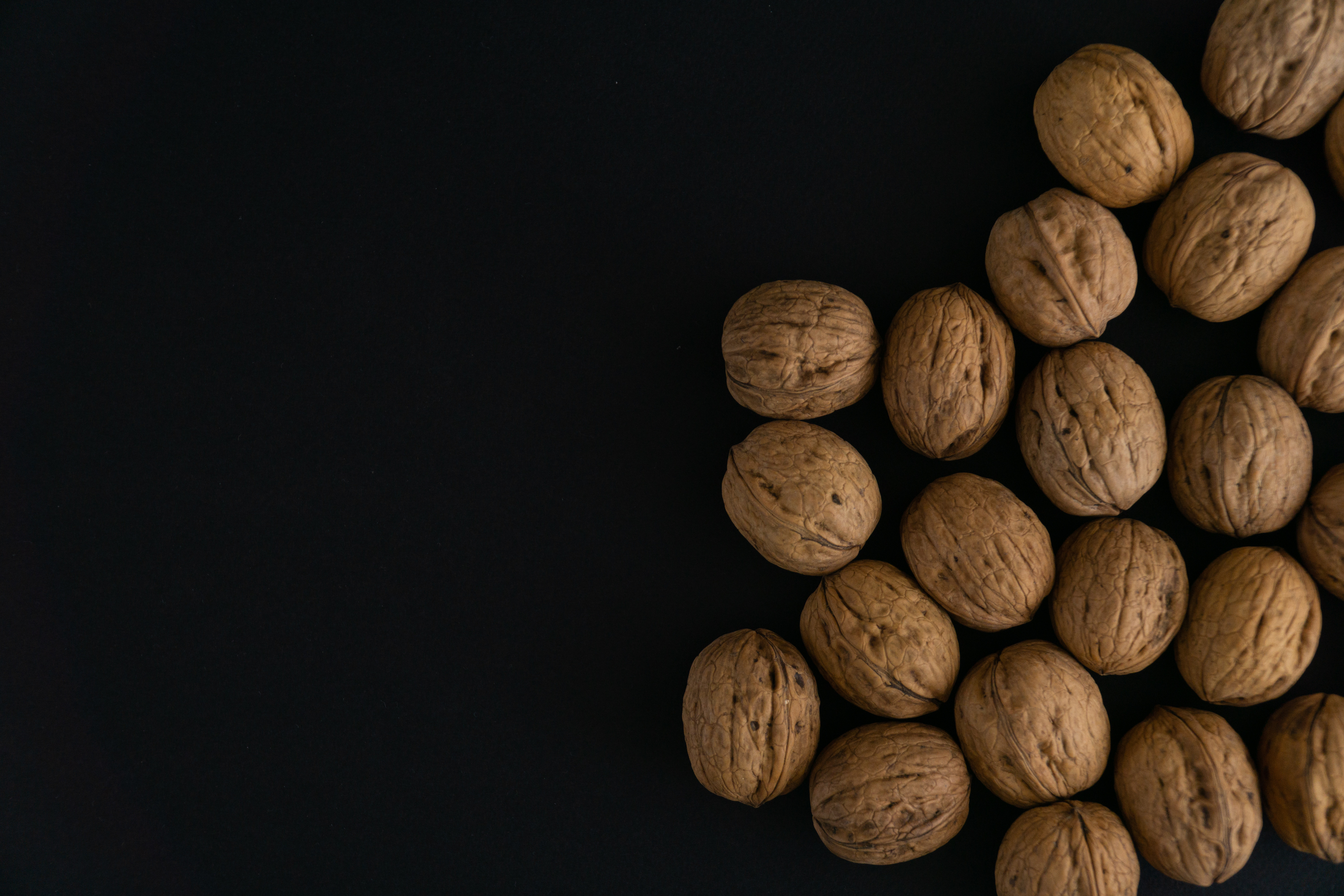
11 minute read
Health & Wellness in the Holiday Season
By Emma Peters
Contributions from Sutter Health and the California Walnut Association
The holidays are on their way, and it’s no secret that eating healthily during these times can be difficult! Here are two California voices which provide some tips, tricks, and food options that will be helpful during the holiday season.
California is the healthiest state because of its lower smoking rate and higher amount of fitness and health locations.
California is the fittest state, with eight of the top 20 fittest cities.
Healthy Holidays:
Six Tips for Mindful Eating
By Meg Walker
The holidays are upon us! People are looking forward to spending time with friends and family. Along with the festive atmosphere and holiday cheer, comes tasty appetizers and big meals, and that can test your willpower and your waistline.
The truth is that a person can take in between 3,000 and 4,500 calories in a typical traditional Thanksgiving meal, according to Consumer Reports. Compare that to the calories a person generally consumes in a day: depending on your age, gender and level of exercise that can be from 1,800 to 2,500 calories, say dietitians at Northern California integrated health system Sutter Health.
Overeating happens all too quickly, and at this time of year Sutter nutritionists are counseling patients on how to handle holiday eating. Enjoy the events but take steps to practice healthy eating, they advise. “Food is a part of making connections with your family and friends,” says Kathy Solis, a registered dietitian and certified diabetes care and education specialist who works in the diabetes education program at Sutter Pacific Medical Foundation. “You want to be part of the group and enjoy the day, but still be cautious of food choices.”
Seema Karnik, manager for nutrition services for Mountain View Nutrition Services at Sutter’s Palo Alto Medical Foundation, adds: “Holidays are a time when we need to be mindful of how far we can go. We need to find a balance between healthy eating and having fun.”
Like most things, moderation and balance are key. To help you include healthy eating into your holidays, here are some tips from Sutter’s registered dietitians:
Have a strategy
Don’t skip meals on the day of the big meal otherwise you will arrive at your holiday party hungry and risk making bad food choices.
Being active or exercising before and after a meal can help cut down calories.
Once you are at the event, concentrate on catching up with friends and family and having good conversations. Play games and spend time outdoors, if possible. Move around, especially if it’s a long, sit-down meal.
Choose healthy foods at your holiday party
Start the meal with soup if that is offered, as it is a good way to cut down on your appetite. Focus on what you can add to your plate that is healthy and not calorie rich. Vegetables are king in this category as they are rich in fiber, which takes longer to digest and can help you feel full on less calories. And choosing colorful vegetables makes a plate look pretty and healthy at the same time. Some choices are squashes, green beans, beets, carrots and different colors of chard.
Also, go for these greens rather than grains such as bread or rolls. Some turkey is fine but go light on stuffing and sauces or gravy.

What about dessert?
If you know you want to have dessert, cut down on other carbohydrates in the meal such as stuffing or bread.
Portion control
Use the healthy plate method: half of your plate should be non-starchy vegetables (examples include broccoli, salad, asparagus, cauliflower, spinach, tomatoes); one quarter of your plate should be protein, including turkey or fish; and one third can be whole grains and starchy vegetables like sweet potatoes, corn or peas.
Alcohol – in moderation
If you are going to drink alcohol, try to stick to a 5-ounce glass of wine or one beer or one cocktail. Consider not drinking alcohol if you can’t be moderate.

Be a good guest
Consider bringing your own healthy dish, especially if you have food restrictions.

Now learn about a California-grown food that you might know the nutritional benefits of:
California Walnuts!
Consider incorporating these into your diet during this upcoming holiday season:
Walnuts May Be a Key Ingredient for Well-being Among Gen Z & Millennials
Food plays a big role in everyone’s identity, and those born between 1997-2012, commonly known as Gen Z, have been deemed the “foodie generation.” Gen Z is driven to a particular food by varied factors, but data suggests foods that support health and well-being by providing energy, managing weight, and fostering mental health are priorities.
Yet when it comes to choosing foods that support these needs, Gen Z, along with Millennials and beyond, often overlooks a convenient and important food group – tree nuts, including walnuts.
Nuts, including walnuts, are nutrient dense and considered a key component of many recommended dietary patterns, including the Mediterranean and vegetarian diets. They are also recommended for daily consumption in the latest U.S. Dietary Guidelines. Despite the recommendations, nuts remain under-consumed by the U.S. population, perhaps because nuts are calorie-dense, leading to potential concerns that including nuts in the diet could promote weight gain.
But new research suggests Gen Z and Millennials should reconsider nuts, like walnuts.
New Research Evaluates the Impact of Nuts on Weight Management for Gen Z and Millennials
In a recent observational study from Indiana University School of Public Health-Bloomington, funded by the California Walnut Commission, researchers observed that adolescents and young adults who consumed walnuts and other nuts had a lower prevalence of obesity when compared with those who consumed no nuts.
Researchers analyzed data from the National Health and Nutrition Examination Survey (NHANES) which included more than 19,000 adolescents (12 – 19 years old) and young adults (20 – 39 years old) to understand the associations between consumption of walnuts and other nuts with measures of obesity including relative fat mass (RFM), a validated tool for estimating body fat percent and regional fat composition.
Young women consuming only walnuts had a significantly lower prevalence of obesity when compared to non-nut consumers. However, this association was not found among young men, adolescent boys, or adolescent girls who consumed walnuts only. Researchers also observed that adolescent girls and young women who consumed walnuts only, or other nuts, had a significantly lower RFM compared to non-nuts consumers. Only young males in the walnut and other nut groups showed an inverse association with RFM compared to no nuts group, this was not found in adolescent boys.
These results are promising suggesting that there may be an association between the consumption of nuts, especially walnuts, with a lower prevalence of obesity and lower RFM within certain populations. However, cause and effect could not be determined, and additional research is needed to support these results.
“As a registered dietitian and a mom of a college student, I’m excited by the emerging research highlighting the potential cognitive, mental health, and metabolic benefits of walnuts for teens and young adults. Incorporating walnuts into kids’ daily lives is easy, delicious, and nutritious, and it’s a strategy that may help them thrive mentally and physically during these critical developmental years,” notes Samantha Cassetty, MS, RD.
Beyond Weight Management: Walnuts May Support Overall Physical and Mental Well-Being in Gen Z & Millennials
Teens and young adults crave food that supports both their physical and mental health, with over 30% seeking emotional and mental health benefits.1 Research suggests that daily walnut consumption could potentially support cognitive health and mental well-being in this unique population.
• Daily Walnut Consumption May Support Teens’ Focus and Attention –
In a multi-school randomized controlled trial of 771 healthy teenagers ages 11 to 16, those who consumed 30 grams of walnuts per day (1 ounce or 1 handful) for six months had improved scores for attention, fluid intelligence (i.e. problem solving, quick reasoning skills) and ADHD symptoms, when compared to the group not eating walnuts. The positive results in this study were only seen in those teenagers who consumed more than 3 servings of walnuts per week. While these results are positive it should be noted that less than half of the participants in the intervention group adhered to the protocol of eating walnuts daily. Thus, the positive results of this study were only seen in the teenagers who regularly ate walnuts. While more research is needed, this study provides valuable insights and a basis for further research on the effect of walnuts on brain development in adolescents.
• Walnuts May Improve Mental Health and General Well-Being in University Students –
A novel study of 80 healthy university students ages 18 to 35 found that 2 ounces (or about 2 handfuls) of walnuts a day for 16 weeks prevented negative changes in self-reported mental health scores and scores of stress and depression during a stressful academic period, compared to those who did not eat walnuts. The group that ate walnuts experienced an increase in markers that protect against stress and a decrease in those that are linked with stress.

• Snacking on Walnuts May Improve Metabolic Health in Young Adults –
In a recent study of 84 young adults, ages 22 to 36, with at least one metabolic syndrome risk factor, researchers found that snacking on 1 ounce of mixed unsalted tree nuts, including walnuts, twice daily, may improve metabolic health, when compared to carbohydrate-rich snacks. Among tree nut snack consumers, researchers observed a reduction in waist circumference and lipid markers in female participants and decreased blood insulin levels in male participants. Those consuming tree nut snacks also saw an effect on triglycerides and TG/HDL ratios with TG/HDL ratios reduced ~11% compared to those consuming carbohydrate-rich snacks.
These studies are not without limitations. While the findings cannot prove causality, they do shed light on how nuts, including walnuts, can be a part of a healthy diet that supports metabolic health and well-being. Additional research is needed to determine how these results apply to other populations.
Simple Action in the Kitchen – Just Add Walnuts
Walnuts are tasty and versatile and can be added to meals and snacks to support optimal nutrition in Gen Z and Millennials, while also helping to close the gap in consumption.
Cassetty suggests toasting walnuts to toss into whole grain salads, roasted veggies like broccoli and green beans, and breakfast foods like yogurt bowls and oatmeal. “They also make green salads heartier and more enticing. Walnuts are also a natural fit for baked goods, and walnuts with dark chocolate is one of my favorite dessert pairings,” she added.
A 1-ounce serving of walnuts contains a powerhouse of nutrients for optimal health.
Simple ways to just add walnuts:
• Breakfast can be made easy with prep-ahead breakfasts, like a Banana Walnut Bread Overnight Oats recipe that eliminates the need to wake up extra early to make a meal or wait in line at a grab-and-go spot.
• Make snack time flavorful with a simple Rosemary and Sea Salt Walnut recipe. It’s also perfect for entertaining!
• Make lunch a time to refuel with nourishing meals, like this Walnut Balsamic Spinach Salad recipe that is tasty and filling to get through a busy afternoon.
• Dinnertime doesn’t need to be complex. A Walnut Mexican Street Corn Taco recipe makes the perfect weeknight dinner in just 18 minutes.
For more recipes and research on the health benefits of walnuts, visit walnuts.org.
There is a lot of temptation during the holiday season to eat poorly, but with these tips and tricks one can be mindful of what they eat and include healthy delicious recipes at the same time!
California is the healthiest state because of its lower smoking rate and higher amount of fitness and health locations.
California is the fittest state, with eight of the top 20 fittest cities.

Emma Peters is the media assistant at California Broker Magazine. She recently graduated from Point Loma Nazarene University summa cum laude, with a Bachelor of Arts in Literature and a minor in Humanities.










